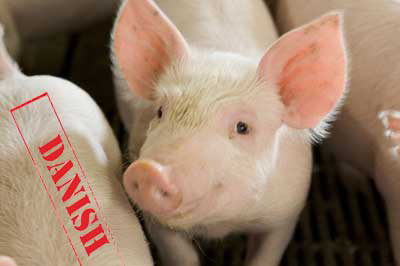Rise in antimicrobial use in Danish pig production

Antimicrobial usage in animals in Denmark continued to increase in 2013 – mainly due to an increased use in pigs but also due to a slight increase in use in poultry.
In 2013, the total use of antimicrobials in livestock and pets in Denmark was 4% higher than the previous year when measured in kilograms according findings in the annual DANMAP report from Statens Serum Institut and the National Food Institute, Technical University of Denmark. DANMAP is the Danish integrated antimicrobial resistance monitoring and research programme.
The increased consumption is mainly attributed to a 6% increase in the consumption of antimicrobials in pig production, which accounts for about 84% of meat production in Denmark. But the consumption in poultry and pets has also increased. Distributed by species , pigs account for around 78% of antimicrobial use in 2013, cattle 10%, aquaculture 3%, poultry 1%, fur animals 4%, and pets, horses and other companion animals the remaining 3%.
Increased use in pigs and poultry
Antimicrobial consumption in pigs measured in doses has increased in all three age groups: sows/piglets (9%), weaners (5%) and finishers (5%). This is primarily due to an increased consumption of pleuromutilins and tetracyclines, which are used for group medication . However, the consumption in pigs is still 12% lower than in 2009, when the highest consumption was recorded since Danish farmers stopped using antimicrobial growth promoters. “It is crucial that we reverse the increase in consumption, if we are to tackle the problem of antimicrobial resistant bacteria,” senior researcher Yvonne Agersø from the National Food Institute explains.
In 2013, antimicrobial consumption in poultry increased by 57% compared to the year before. This is partly because of the wet winter, which led to more illness and – as a result – an increased consumption of tetracyclines in turkeys.
Continued low consumption of critically important anti-microbials
Consumption of critically important anti-microbials in animal production is still low. For a second consecutive year, the use of fluoroquinolones in pigs was very low in 2013 at less than 1 per mille of the total consumption in pigs. The use of 3 kilos of cephalosporins in pig production is also low. However, it does represent a significant increase compared to the year before when total consumption of cephalosporins was 1 kilo. There has been a significant drop in consumption in cattle. “It remains important that Danish pigs and cattle are treated with critically important anti-microbials only when absolutely necessary to help ensure these agents continue to be effective when treating seriously ill people,” Agersø says.
In 2010, Danish pork producers introduced a voluntary ban on the use of cephalosporins where other effective treatment options are available. In August 2014, the Danish Agriculture & Food Council encouraged cattle farmers to only use cephalosporins where this is the only effective treatment option.
Source: DANMAP











